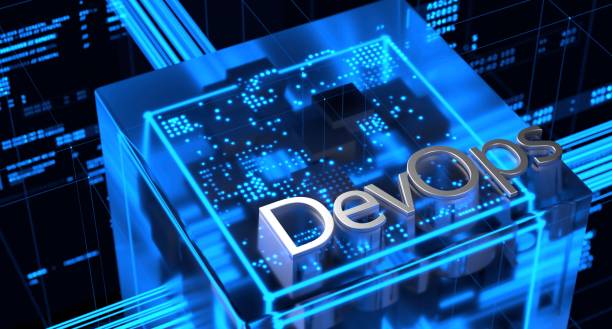
Introduction
In today’s technology-driven world, organizations are constantly striving to optimize their software development and delivery processes. DevOps has emerged as a valuable approach, enabling teams to enhance collaboration, increase deployment speed, and achieve continuous delivery. However, when it comes to integrating DevOps practices with mainframe systems, unique challenges arise. In this blog post, we will explore the world of mainframes and the specific obstacles they present for DevOps teams. We’ll delve into the key challenges faced by novices in DevOps and discuss strategies to overcome them.

Understanding Mainframes
Mainframes are large, powerful, and robust computers that have been around since the 1950s. They are designed to handle massive workloads and deliver high levels of performance, reliability, and security. Mainframes are commonly used in industries such as banking, insurance, government, and healthcare, where large-scale data processing is essential.
Mainframes often host mission-critical applications and contain vast amounts of legacy code. They operate on specialized operating systems like z/OS, which have their own unique characteristics and toolsets. Due to their long-standing presence in the industry, many mainframe systems are built on outdated technologies and lack the agility of modern software development practices.
Challenges Faced by DevOps in Mainframe Environments
Cultural and Organizational Resistance: Mainframe systems are often managed by separate teams with their own processes, tools, and mindsets. Breaking down silos and fostering collaboration between mainframe and DevOps teams can be a significant cultural challenge. Resistance to change, fear of disruption, and lack of awareness about the benefits of DevOps can hinder progress.
Skill and Knowledge Gap: Mainframe technologies require specialized skills and expertise. Many DevOps practitioners are unfamiliar with mainframe concepts, languages (such as COBOL and Assembler), and tools (like JCL and ISPF). Bridging the skill and knowledge gap between mainframe and DevOps teams is crucial for successful integration.
Legacy Systems and Monolithic Architectures: Mainframe applications are often built on monolithic architectures, making it challenging to adopt the modular, microservices-based approach favored in modern DevOps. The tight coupling of components and extensive interdependencies can impede agility and hinder rapid deployment.
Lack of Modern Tooling: DevOps heavily relies on modern tools and technologies, such as version control systems, continuous integration/continuous deployment (CI/CD) pipelines, and automated testing frameworks. However, mainframe environments often lack these tools, making it difficult to integrate mainframe development with the broader DevOps ecosystem.
Limited Testing Environments: Mainframe systems are complex and expensive to replicate for testing purposes. Limited availability of mainframe testing environments hinders the adoption of practices like automated testing and continuous integration. This challenge can lead to longer development cycles, increased risk of errors, and slower time-to-market.
Strategies to Overcome Mainframe DevOps Challenges:
Foster Collaboration: Encourage communication and collaboration between mainframe and DevOps teams. Create cross-functional teams that include mainframe experts and provide opportunities for knowledge sharing and skill transfer.
Invest in Training and Upskilling: Offer training programs to DevOps practitioners to familiarize them with mainframe concepts, languages, and tools. Encourage mainframe professionals to learn DevOps practices and tools. This will bridge the knowledge gap and promote a culture of continuous learning.
Break Down Monoliths: Identify opportunities to break down monolithic mainframe applications into smaller, more manageable components. Adopt a phased approach, starting with isolated modules that can be independently developed, tested, and deployed. This promotes agility and facilitates the adoption of DevOps practices.
Modernize Tooling: Explore modern DevOps tools and technologies that can integrate with mainframe systems. Look for solutions that enable version control, automated testing, and CI/CD pipelines specifically designed for mainframe environments. Embrace automation to streamline development, testing, and deployment processes.
Leverage Mainframe Virtualization: Utilize virtualization technologies to create cost-effective mainframe testing environments. Virtual mainframes allow for parallel development, testing, and deployment, reducing reliance on scarce physical mainframe resources.
Implement Continuous Testing: Establish a comprehensive testing strategy that includes automated unit testing, integration testing, and end-to-end testing across mainframe and non-mainframe components. Continuous testing helps identify issues early in the development cycle and improves software quality.
Conclusion:
Integrating mainframe systems into the DevOps landscape presents unique challenges, but with the right strategies, they can be overcome. By fostering collaboration, investing in training and upskilling, breaking down monoliths, modernizing tooling, leveraging virtualization, and implementing continuous testing, organizations can successfully integrate mainframe environments into their DevOps processes.
It is important for organizations to recognize the value of mainframe systems and leverage their power while embracing the benefits of DevOps. By bridging the gap between mainframe and DevOps teams, organizations can achieve faster delivery, improved quality, and increased agility, ultimately driving business success in the digital age.
